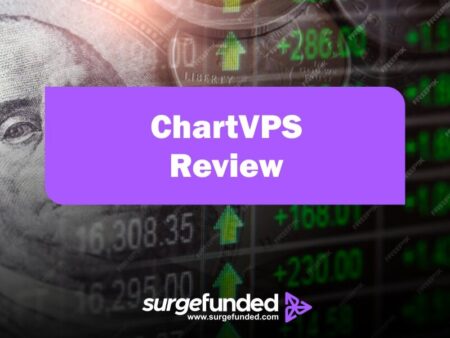HFT prop firm performance metrics symbolizes the intricate interaction of market forces, strategy, and technology. Rapid trading and the application of complex algorithms to profit from even the smallest price fluctuations are hallmarks of HFT, which has completely changed the financial markets. HFT prop firm performance metrics that are essential for assessing HFT organizations will be covered in detail in this article, along with their importance, calculation methods, and trading and investment ramifications.
What Is High-Frequency Trading
HFT is a form of algorithmic trading that entails carrying out a lot of orders at incredibly fast speeds. HFT prop firms use co-location services and cutting-edge technology to reduce latency, or the time it takes to execute an order after it is sent. The main objective of HFT prop firm is to maximize profits from tiny price fluctuations, frequently occurring in milliseconds or seconds.
Features of HFT
- Speed: In order to take advantage of short-lived market opportunities, HFT depends on ultra-low latency.
- Volume: HFT prop firms usually carry out a large number of trades every day, which frequently accounts for a sizable amount of the overall market volume.
- Market Impact: HFT’s potential to affect market volatility and liquidity has sparked debate on its function in maintaining market stability.
HFT Prop Firm Performance Metrics
HFT prop firm performance metrics are evaluated using a number of important measures. These indicators shed light on overall trading efficiency, profitability, and risk-adjusted returns. The most important HFT prop firm performance metrics are listed below:
1. The Sharpe Ratio
The Sharpe Ratio, which calculates risk-adjusted returns, is as follows:
Sharpe Ratio= Rp−Rf / σp
where Rp is the return on the portfolio, Rf is the risk-free rate, and σp is the standard deviation of the portfolio’s excess return. Better risk-adjusted performance is indicated by a greater Sharpe Ratio. A Sharpe Ratio of 2.0 is regarded as excellent in the context of HFT, and some firms have ratios as high as 4.3
2. Maximum Drawdown(MDD)
Maximum drawdown is measured by the greatest peak-to-trough drop in portfolio value over a certain time period. It functions as a crucial indicator of risk, showing possible losses an investment could experience:
MDD= Peak Value−Trough Value/ Peak Value
Maintaining an MDD below 25% is typically seen as appropriate for HFT techniques.
3. Profit Factor
The Profit Factor compares total gains to total losses in order to evaluate overall profitability:
Profit Factor=Total Gains/Total Losses
Profitability is shown by a profit factor larger than 1, and strong performance is indicated by values greater than 1.75
4. Win Rate
The percentage of profitable trades compared to all trades performed is known as the win rate. Because transaction amounts and results vary, a high win rate does not always translate into profitability, even if it can suggest stability.
5. Latency
Latency refers to the time it takes for an order to be fulfilled after it is placed. In HFT Latency is crucial, a lower latency might result in more trading opportunities being captured before prices change. Successful tactics frequently strive for execution times often measured in microseconds or less.
Other Measures and Things to Think About
A number of additional elements are essential for HFT prop firm performance metrics in addition to these key metrics:
- Relative Latency: Rather than comparing an HFT firm’s speed in absolute terms, this metric compares it to its rivals. Businesses that routinely rank faster than their competitors typically generate more income.
- Measures of Liquidity: Analyzing the amount of liquidity that an HFT prop firm generates or uses can reveal information about its influence on the market. Metrics such as the percentage of time present at best quotes or contribution to quoted depth are essential
- Risk Management Strategies: Effective risk management practices are vital for sustaining profitability in HFT environments characterized by rapid price movements and potential adverse selection risks.
Implications for Investors and Traders
Investors thinking about exposure to such strategies, as well as HFT firms, must understand these HFT prop firm performance metrics:
- Risk assessment: To determine how well an HFT strategy strikes a balance between risk and reward, investors should look at the Sharpe Ratio and Maximum Drawdown.
- Analysis of Profitability: Metrics such as Profit Factor shed light on whether an HFT approach can produce steady profits over an extended period of time.
- Knowledge of Market Dynamics: Having an understanding of how latency affects trading performance might help you make better judgments about technology investments or alliances with high-frequency traders.
Obstacles and Prospects
Despite being a powerful force in contemporary markets, HFT confronts a number of obstacles:
- Regulatory Scrutiny: Operational tactics may be impacted by heightened regulatory focus on market manipulation and systemic concerns related to quick trading.
- Technological Arms Race: As HFT enterprises compete to reduce latency, excessive investments in technology that do not ensure proportionate benefits may result.
- Market Stability Concerns: Regulators and market participants continue to disagree about how HFT contributes to market volatility at stressful times.
In conclusion
The intricate interaction of technology, strategy, and market dynamics is reflected in HFT. Traders and investors can learn a great deal about the stability and effectiveness of HFT strategies by closely examining performance indicators like the Sharpe Ratio, Maximum Drawdown, Profit Factor, Win Rate, and Latency. Maintaining awareness of these indicators will be essential for successfully navigating this rapidly changing field as the landscape continues to change due to legislative and technical breakthroughs.
Frequently Asked Questions
1. How Fast Is HFT
- With trades being completed in milliseconds or even microseconds, HFT runs at extraordinarily rapid speeds. Speed is essential since even small delays can lead to lost revenue opportunities. In order to reduce latency14, HFT firms frequently use co-location services, positioning their trading systems close to exchange servers.
2. What are the main attributes of HFT?
- Speed: Milliseconds or microseconds are used to perform trades.
- Volume: HFT prop firms often make a large number of deals every day, which greatly adds to the total volume of the market.
- Short Holding Periods: In order to reduce exposure to market risk, positions are typically held for very brief periods of time.
- Algorithmic Strategies: Based on real-time data analysis, HFT uses sophisticated algorithms that can quickly execute orders and spot trading opportunities.
3. How Is Market Liquidity Affected by HFT?
- By supplying additional buy and sell orders, HFT is frequently attributed with improving market liquidity. Narrower bid-ask spreads may result from this enhanced liquidity, which would facilitate transaction execution for other market participants. However, some contend that the liquidity offered by HFT may be “ghost liquidity,” since it can disappear rapidly and not be accessible to traditional investors when they need it.

















